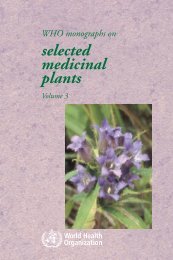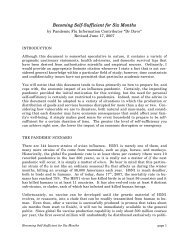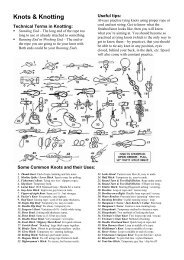You also want an ePaper? Increase the reach of your titles
YUMPU automatically turns print PDFs into web optimized ePapers that Google loves.
COMMON EDIBLE MUSHROOMS<br />
stem with the other hand, pulling it gently from side to side, it<br />
will be detached easily from the flesh of the cap, leaving no torn<br />
shreds but only a smooth hemispherical or rounded hole. Although<br />
the spore color is officially pink, and in most species of<br />
the genus is definitely so, Pluteus cervinus, the most common species<br />
of the genus (Figure 42) makes an off-color spore print in<br />
which the pink is so diluted with tan that one might easily, on<br />
that basis alone, place it with the yellow-brown-spored group.<br />
However, it has gills that do not come within 1/8 inch of the<br />
stem, a definitely separable stem, and certain microscopic characters<br />
that make it a typical Pluteus.<br />
The caps are shiny white to fawn-colored, from 4 to 6 inches<br />
wide, flat or gently sloping down from the center to the edge.<br />
The gills are so close together that when they lose their rigidity,<br />
with age, they collapse against one another; they are from 1/2 to<br />
i inch wide and, as stated above, do not touch the stem at all.<br />
The stem varies in length from 3 to 6 inches, in width from slender<br />
to stout, and is white and rather tough.<br />
Several varieties of this common mushroom have been described,<br />
differing from each other chiefly in the color of the cap.<br />
It is fairly common in summer and fall, growing singly or in<br />
small groups on wood, sawdust, or compost.<br />
7 2
















